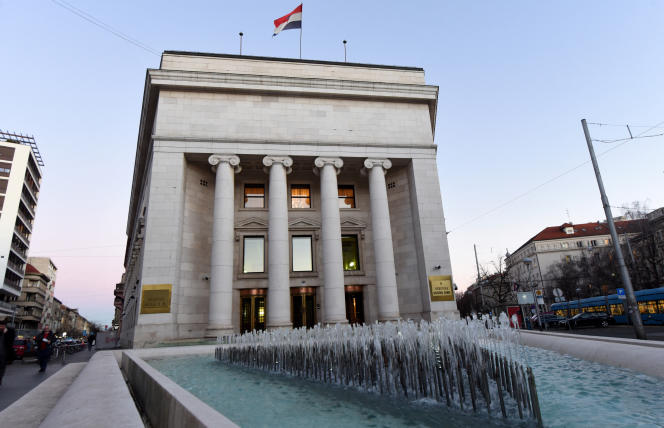Seven years after the entry of Lithuania, the European Commission estimated on Wednesday June 1 that Croatia met the conditions to adopt the single currency on January 1, 2023, which will make it the twentieth member of the euro zone. The formal decision will be taken in early July by EU finance ministers, but the door is now wide open. No opposition is expected, while the former Yugoslav Republic of four million inhabitants meets all the technical criteria. The European Central Bank (ECB) also issued a positive opinion on Wednesday.
“I expect the procedure to go well and Croatia to be able to join the euro area as early as next year,” said Commission Vice-President Valdis Dombrovskis, who will be in Zagreb on Thursday.
Croatia had expressed its desire to adopt the single currency as soon as it joined the EU in 2013. It is now “ready to join the euro zone on January 1. This will strengthen Croatia’s economy, benefiting its citizens, businesses and society as a whole,” Commission President Ursula von der Leyen said in a statement. This will “also strengthen the euro”, she said.
The Mediterranean country has an important tourism sector. Wealth creation per capita is just over half of the average level in the EU, like Poland and the Baltic States. The unemployment rate reached 6.1% in April, in line with the European average.
This green light comes as the euro has just celebrated its 20th anniversary as a fiduciary currency. On 1 January 2002, millions of Europeans in twelve countries were giving up the lira, the franc, the deutschemark and the drachma for euro coins and banknotes. They have since been joined by seven other countries: Slovenia in 2007, Cyprus and Malta in 2008, Slovakia (2009), Estonia (2011), Latvia (2014) and, finally, Lithuania in 2015. euro now has 345 million inhabitants.
Symbol of European unity
The single currency is a symbol of European unity and sovereignty. All EU countries have theoretically committed to joining as soon as they meet the conditions, but no timetable is set. The only exception, Denmark negotiated an exemption after a referendum in 2000 in which the Danes rejected the euro.
The introduction of a new currency has raised fears in many countries. This is also the case in Croatia where only 30% of the inhabitants consider their country ready for the euro, according to a study carried out in March and April. Some 87% of the population believe it will lead to price increases. The Croatian economy is, in any case, ready for the new currency, according to the criteria examined by the Commission and the ECB.
In April, the 12-month harmonized inflation rate, at 4.7%, was below the target level of 4.9%. Finances are sound. The public deficit reached 2.9% of gross domestic product (GDP) last year, just under the 3% limit. Debt, at 80% of GDP, certainly exceeds the 60% threshold, but this is the case for most EU countries and its trajectory is clearly downwards. The country’s long-term interest rates are also within the set limits.
Finally, the country joined the European Exchange Rate Mechanism (ERM II) in July 2020 and has remained there without difficulty. This mechanism sets a variation limit of 15% around the course of the kuna, the Croatian currency, currently established at 7.5345 for one euro. A final exchange rate will be set in July.
In its report published on Wednesday, the Commission considers that Bulgaria, which hopes to adopt the euro in 2024, does not yet meet the conditions. Five other countries in the antechamber of the single currency (Hungary, Poland, Czech Republic, Romania, Sweden) are also in this case, but they have no plans to join in the very short term.














